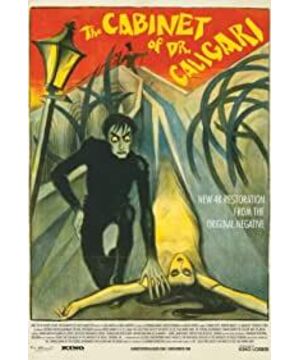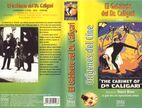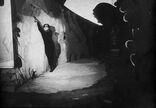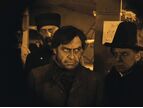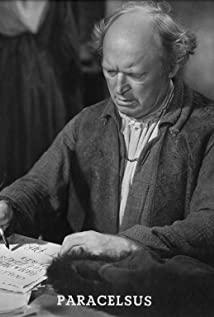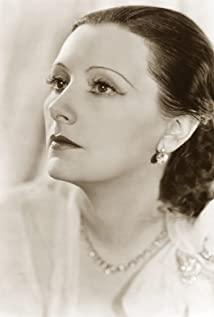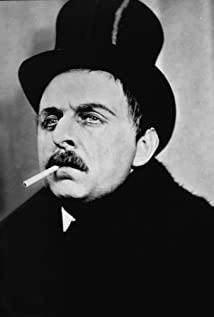"Dr. Caligari's Cabin" first sort out a few important time points. The first sound film "Jazz Singer" was directed by Alan Crossland and starred Al Qiaosheng, Mae McAvoy and other romantic musicals. It was released in the United States on October 6, 1927. The first color film movie "Fancy World", also known as "Vanity Fair" (Vanity Fair: Hero) is a satirical novel by British novelist William Makebes Thackeray, published in 1847 and has been adapted into film and television many times. The title of the book was translated as "Vanity Fair" in the early years, and its adaptation of the film of the same name "Fancy World" is the world's first color film. Dr. Caligari's Cabin, 1920, so when this film came out, the visual and auditory aspects were not fully developed, and it was still in the silent film era. The background music is average, in order to make the movie look less boring. In terms of visual presentation, a lot of colors are used, with pink for women, blue for night, and yellow for day, to satisfy the narrative of the film. Technically don't know how to do it. Another concept will be added here. German Expressionism Expressionism is one of the important modern art schools. A genre of literature and art popular in Germany, France, Austria, Northern Europe and Russia in the early 20th century. The term was first used by the French painter Julien Auguste Hervé in 1901 to indicate that his painting was different from the Impressionists. Later German painters also made bold "innovations" in many aspects, such as method, technique, line and color, and gradually formed a faction. Later developed into music, film, architecture, poetry, novel, drama and other fields. Expressionism is that artists focus on expressing their inner emotions through their works, while ignoring the description of the object's form, so they often show distortion and abstraction of reality. This approach is especially used to express fearful emotions. Therefore, the theme of expressionism is cheerful. Works are rare. The works of Matisse Grünewald and Greco can also be said to be expressionist by this definition, but in general expressionism is limited to works of the 20th century. But most of them are influenced by Kant's philosophy, Bergson's intuitionism and Freud's psychoanalysis, emphasizing anti-tradition, dissatisfied with the social status quo, and demanding reform and "revolution". In terms of creation, they are not satisfied with the imitation of objective things, but demand to express the inner essence of things; they demand to break through the description of human behavior and the environment in which people live to reveal the human soul; they demand that they no longer stop at temporary phenomena and serendipitous narrations show its timeless quality. It has produced a number of influential writers and works in poetry, fiction and drama. The themes of his poems are mostly disgust for the hustle and bustle of the city, or expose the chaos, depravity and sin of the big city, full of reclusive sentimentality or the promotion of "universal humanity". It is characterized by not paying attention to the description of details, and only pursuing a strong expression of subjective spirit and inner passion. representative There are Austria's Trakl and Germany's Heim, Bain and so on. The characters and stories of his novels are all unusual deformations or distortions of real life, which are used to reveal the alienation phenomenon of industrial society and the serious spiritual crisis in which people lose themselves. Representative figures include Kafka of Austria. The content of the drama is absurd and bizarre, the structure is scattered, there is no logical connection between the scenes, the plot changes abruptly, and there is no clear boundary between life and death, fantasy and reality. Use short, fast, high-pitched, strong-rhythm long inner monologues to express the characters' thoughts and feelings. At the same time, a large number of lighting, music, masks, etc. are used to supplement the effect of language. Representatives include Strindberg in Sweden, Torrell in Germany, O'Neill in the United States, Capek in the Czech Republic, Duquesne in the United Kingdom, Yixiu Wode and O'Casey in Ireland. Expressionism (defined in the 2009 edition of Cihai): Also known as "Expressionism". A literary trend and genre popular in the modern West. It emerged in Germany, the United States and other countries that flourished in the 1920s and 1930s in the early 20th century. It is required to break through the appearance of things to highlight their inner essence, break through the description of human behavior and wedged into their inner soul, and break through the description of temporary phenomena to reveal the eternal quality or "truth". Heavily influenced by Kant, Bergson and Freud. Due to the emphasis on describing the eternal quality, the characters in the pen are often abstract and symbolic of a commonality; due to the emphasis on writing the heart, intuition and subconsciousness, inner monologues, dreams, subtexts, masks and other means are often used; Substance, often consciously distorting objective events. Abstraction, distortion, deformation, alienation, subjectivity. They are all keywords that can be extracted from expressionism. Such as Kafka's Metamorphoses. Specific to "Dr. Caligari's Cabin", on the set, exaggerated and distorted lines, grotesque paintings, contrasting colors, gloomy and terrifying makeup, and terrifying and tense music are all used to create a grotesque, morbid, abnormal state. The actor's performance is also cold, empty and dull. It may be that the film at this time has not completely gotten rid of the mode of theatrical performance. The body language of the actors is extremely exaggerated and comical, which attracts the audience's attention and performs in the form of a stage play. The photographer also fixed the camera at one point to shoot. I learned from this film that Dr. Caligari was the director of a mental hospital, and Francis was a patient in the mental hospital that Dr. Caligari managed. This means that Francis is just a madman, and what he says is just some madness, and no one will believe what a madman says. So, this means that Dr. Caligari has nothing to do with the series of horrors and murders that happened in this small town before, and what Francis said is nothing but the imagination of a madman in his own world. . In the subjective world of a madman, Dr. Caligari is an unreachable, authoritative controller, and a murderer who creates terror and plots in a quiet life. The people in this town are not only those who are controlled by Caesar, but everyone in the entire town is controlled by Dr. Caligari. In such a control, everyone's life is unfortunate, which leads to a sick, deadly, pessimistic state that the whole town manifests. The film was shot during the First World War. As a defeated country, Germany will inevitably be devastated and suppressed by the victorious country. In this real situation where the whole country is turbulent and empty shells, it is conceivable that the whole country is filled with a repressed and morbid mood. know. In this situation, people began to question the rulers Such questioning has awakened a large number of people with lofty ideals to think and pay attention to the inner world of people. Against such a background, the protagonist of this film, Francis, was a microcosm of the objective reality of the entire European life at that time, and was also a typical representative of every ordinary person living in such an environment. Actors, objects, and set designs in expressionist films are all used to convey emotions and mental states, without paying attention to the original meaning of the images. The quintessential expressionist film "Dr. Caligari" is famous for using this technique.
View more about The Cabinet of Dr. Caligari reviews


